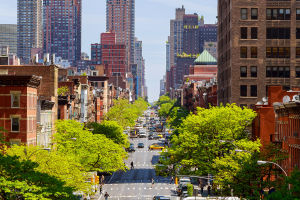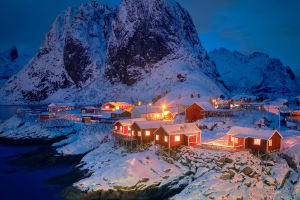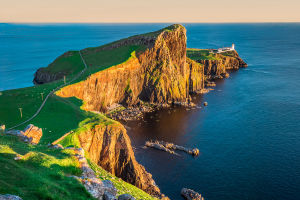Sahara: Your First Calling
Ever dreamed of standing where the Earth feels endless? The Algerian Sahara isn't just sand; it's a vast, ancient theatre of dunes, mountains, and stars so bright they steal your breath.
Forget crowded resorts – this is raw, soul-stirring adventure. But where to start? Don't sweat it! This guide unpacks everything a first-timer needs to unlock the magic of the world's greatest desert.
Land of Giants
Imagine seas of orange sand dunes rolling like frozen waves, taller than buildings. Picture volcanic peaks jutting dramatically from plains of black rock. The Algerian Sahara forms the heart of the planet's largest hot desert. Hidden within are lush oases, ancient riverbeds, and valleys showcasing Earth's wildest geology. It's humbling, breathtaking, and utterly unique.
Tuareg Wisdom
Your guides? The legendary Tuareg, often called the "Blue People" for their indigo robes. These masters of desert survival have navigated these sands for centuries. Travelling with them isn't just transport; it's cultural immersion. They share stories, brew sweet tea over crackling fires, and reveal secrets of the landscape invisible to untrained eyes. Respect their knowledge and traditions.
Perfect Timing
October to April is golden. Daytime temps hover around a pleasant 20-25°C (68-77°F), perfect for exploring. Nights dip dramatically (5-10°C / 41-50°F) – pack warm layers! December-February offers the coolest days but potentially coldest nights. Avoid May-September: scorching heat (easily 45°C+/113°F+) makes travel dangerous and uncomfortable.
How Long?
A taste? 5-7 days focusing on one region (e.g., Tamanrasset & Assekrem, or Djanet & Tadrart). For a deeper dive: 10-14 days, perhaps combining Djanet's rock art with Tamanrasset's mountains, or adding Ghardaïa's culture.
Factor in travel days: flights within Algeria add time. Rushing this experience is a crime against wonder!
Tamanrasset
Djanet's Treasures
Your base for Tassili N'Ajjer National Park (UNESCO World Heritage). This vast plateau is an open-air museum of prehistoric rock art. Think thousands of paintings and engravings (6,000+ years old!) depicting giraffes and elephants – proof the Sahara was once green. Tours (€80-€150/day) involve 4WD and hiking.
Must-sees: Sefar Plateau, Tamrit site. Entry fees: ~€10-€15.
Tadrart Adventure
South of Djanet lies the Tadrart Rouge (Red Tadrart). This is the iconic Sahara: massive, sculpted red sand dunes like those in "The English Patient". Multi-day 4WD expeditions (€120-€200/day) or camel treks (€100-€180/day) plunge you into its silent beauty. Camping under a billion stars is non-negotiable. Budget a minimum of 4–5 days for this place.
Tamanrasset Hub
The bustling capital of the deep south, gateway to the Ahaggar Mountains (Hoggar). It's a fascinating mix of cultures. Use it to stock up on supplies (sunscreen!), visit the museum, and arrange tours. Accommodation ranges from basic auberges (€50/night) to comfortable hotels (€100-€150/night).
Assekrem Ascent
The pièce de résistance near Tamanrasset. Drive (or hike part-way) up the Atakor Plateau to Assekrem (~2,800m). Charles de Foucauld's tiny hermitage clings here. Why come here? The sunset. Watching the sun explode in colours over a jagged volcanic sea is a spiritual experience. Day trips cost €60-€100 (includes 4WD). Pack very warm clothes – it gets freezing!
Ghardaïa's Charm
In the northern Sahara, the M'Zab Valley (UNESCO) offers a different vibe. Ghardaïa is a pentapolis of ancient, fortified towns (ksour) built on hills. Wander labyrinthine alleyways, admire unique Mozabite architecture (white & pink), and haggle in bustling traditional markets for carpets, pottery, and jewellery. Explore independently or take guided tours (€30-€50/half-day).
Hotels: €40-€100/night.
Gear Up Smart
Packing right is crucial:
Clothing: Light, loose layers (long sleeves/pants for sun), warm fleece/jacket, thermals for night, sturdy hiking boots, sandals, headscarf (shema), sunglasses, wide-brim hat.
Essentials: Passport, bank cards, cash (DZD/EUR/USD), high-SPF sunscreen, lip balm, reusable water bottle (3L+ capacity!), headtorch, basic first-aid kit, wet wipes, power bank.
Optional: Sleeping bag (for camping comfort), camera, binoculars, small gifts for guides (pens, useful items – ask operator first).
Camel or 4WD?
4WD Expeditions: Cover vast distances quickly, access remote sites comfortably. The standard choice. Expect bumpy rides! (€100-€200/day all-inclusive).
Camel Treks: Slow, immersive, deeply traditional. Ideal for shorter routes (2-4 days) in areas like Tadrart. Authentic but physically demanding. (€80-€150/day all-inclusive). Often combined with 4WD to reach the starting point.
Leave No Trace
This pristine environment is fragile. Pack out ALL trash (including biodegradable). Minimize plastic use. Respect wildlife (it's scarce and precious). Stick to established tracks. Ask permission before photographing locals. Respect cultural sites – don't touch rock art! Preserve the magic for others.
Conclusion: Take the Leap
The Algerian Sahara isn't just a trip; it's a transformation. It's the crunch of sand underfoot, the silence that roars, the Milky Way ablaze overhead, and the warmth of Tuareg tea shared in the dunes. Yes, it requires planning and it pushes comfort zones.
But the reward? An unparalleled connection to our planet's raw beauty and ancient soul. Your desert dream is absolutely achievable. Start planning, pack smart, respect the land and its people, and prepare to have your world rocked by the endless sands. Your Sahara story begins now.
Contact to : xyjph123@gmail.com
Privacy Agreement
Copyright © boyuanhulian 2020 - 2022. All Right Reserved.
Privacy Agreement
Copyright © boyuanhulian 2020 - 2022. All Right Reserved.


